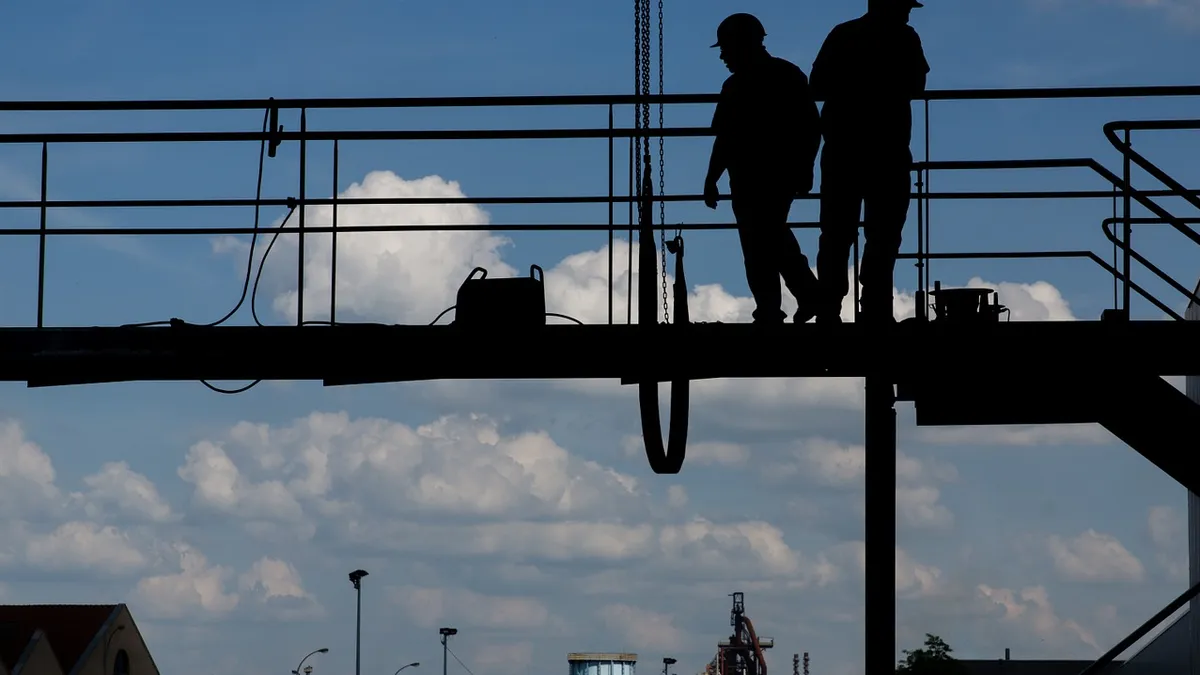Dive Brief:
- A LexisNexis Business Insights Solutions report indicates that slavery conditions are "common" throughout the global construction industry.
- Construction and its ancillary supply chain businesses, said LexisNexis Director Mark Dunn, account for approximately 7% of the world's labor force, which means "countless thousands of workers" could be victims of modern slavery.
- The construction industry's reliance on cheap labor in much of the world, the report said, has made conditions ripe for exploitation, and the problem is compounded by lack of "prevention, policing and prosecution" by governments around the world.
Dive Insight:
The authors of Hidden in Plain Sight — Modern Slavery in the Construction Industry said they reached their conclusions after analyzing articles from more than 6,000 global news sources between January and May and added that it is the responsibility of governments, businesses and the media to stop the ongoing forced labor and exploitation conditions in the world's construction and supply chain industries.
The report alleges that slave labor was used on the World Cup 2022 stadiums in Qatar, a marine construction project in the U.S., and an industrial plant in Angola, all highlighted to support allegations of modern slavery. In addition, LexisNexis asserts that there were as many as 13,000 potential slavery victims in the United Kingdom in 2014. Global labor organizations estimate that there are 20 million to more than 45 million workers throughout the world trapped in modern slavery.
Despite such dismal numbers, enactment of various governmental and legislative tools meant to combat worldwide modern slavery in the construction industry, according to an article by Camilla de Moraes of international law firm K&L Gates, are on the rise. These include the U.K.'s Modern Slavery Act 2015, which spurred the appointment of an Independent Anti-Slavery Commissioner. In addition, the European Union Non-Financial Reporting Directive mandates that member states reveal their human rights policies and enact laws in order to comply with the directive by Dec. 6, 2016.













